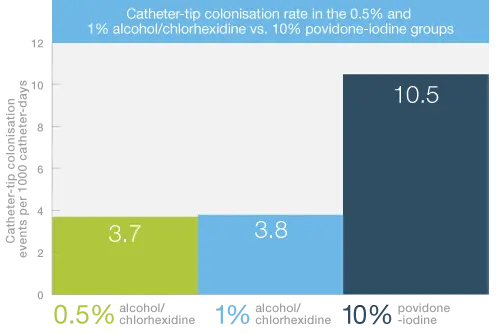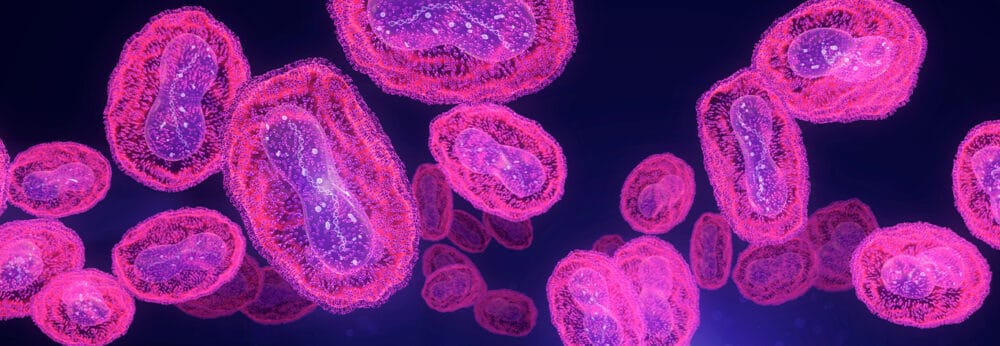Posted
25th January 2018
Research
An impressive randomised multi-centre study in Japan has evaluated the efficacy of 0.5 and 1% alcohol/chlorhexidine with 10% povidone-iodine in preventing colonisation of vascular catheters. The study concluded that chlorhexidine at either concentration is superior to povidone-iodine in preventing the colonisation of vascular catheters.
The study was performed in 16 Japanese intensive care units. The 796 central venous or arterial catheters included in the final analysis were randomised to 0.5% and 1% alcohol/chlorhexidine with 10% povidone-iodine during insertion and dressing changes. Catheter-tip colonisation was 3.7 events per 1000 catheter-days in the 0.5% chlorhexidine group, 3.8 in the 1% chlorhexidine group, and 10.5 in the povidone-iodine group. The rate of catheter-tip colonisation was statistically significantly lower in both chlorhexidine groups compared with the povidone-iodine group.It’s important to note a couple of limitations in this study. Firstly, the authors compared chlorhexidine in alcohol with a povidone-iodine solution. So it isn’t possible to disentangle the effect of alcohol from chlorhexidine using this design. Secondly, although the authors tested two concentrations of chlorhexidine (0.5% and 1%), both are lower than would usually be used in clinical settings in most parts of the world (2%). Thirdly, there was no impact on the rate of catheter-related bloodstream infections between the two groups, although this may be a factor of sample size, because the primary outcome, for which the study was powered, was catheter tip colonisation.Despite these limitations, the findings of this large randomised trial are compelling, finding that vascular line-tip colonisation is less than half as likely when chlorhexidine is used during insertion and ongoing line care compared with povidone-iodine. This reinforces that chlorhexidine is a better choice than povidone-iodine for skin decontamination during line insertion and ongoing line care in the ICU setting.

SHARE THIS ARTICLE
Tags
Latest News
Celebrating 20 Years of GAMA Healthcare: Our Story
This month, GAMA Healthcare celebrates 20 years of helping prevent…
Norovirus: Understanding its transmission and prevention in the UK
Introduction Norovirus is recognised as the leading cause of viral gastroenteritis…
Clean Between to Reduce Healthcare-Associated Infections
Healthcare-associated infections (HAIs) are a significant concern for healthcare facilities…
Mpox: emergence of a new threat
A new threat related to mpox is emerging, in the…




